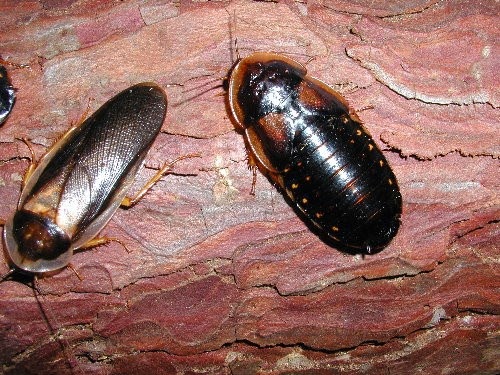The Ultimate Guide to Breeding Dubia Roaches for Your Bearded Dragon
Breeding Dubia Roaches for Your Bearded Dragon: A Comprehensive Guide

If you own a bearded dragon, one of the best ways to provide it with a nutritious and balanced diet is by feeding it dubia roaches. These insects are high in protein, low in fat, and easy to digest, making them an ideal staple food for your pet. But buying dubia roaches can quickly become expensive, so it’s a good idea to breed them yourself. In this guide, we’ll take you through the process of breeding dubia roaches, step by step.
What You’ll Need
- A colony of dubia roaches (you can buy them online or at a pet store
- A suitable container (a plastic tub or glass tank with high sides is ideal)
- A substrate (e.g., egg cartons, paper towel, or coconut fiber)
- Food and water (e.g., fresh fruits and vegetables, dry cat food or fish pellets, and a water dish)
- Heat source (a heat mat or lamp, or a room with a consistent temperature of 80-90°F)
- Good hygiene practices (cleaning the container regularly to prevent mold and bacteria from growing)
Setting up the Colony
To start breeding dubia roaches, you’ll need to set up a colony of females and males. One female can produce up to 35 young every two months, so you won’t need many to start your colony. Here’s how to do it:

- Choose a container with a tight-fitting lid to prevent escapees.
- Add a substrate to the container. Egg cartons, paper towel, or coconut fiber all work well. This will provide a hiding place for the roaches and a surface for the females to lay eggs on.
- Introduce your adult dubia roaches. For every two females, you’ll need one male. Make sure the males have wings - this indicates they are fully grown and capable of mating.
- Provide a source of food and water. Dubia roaches will eat fresh fruits and vegetables, dry cat food, or fish pellets. They also need a shallow water dish for drinking.
- Set up a heat source. Ideally, the container should be kept between 80-90°F. If you’re using a heat mat or lamp, make sure it’s not too close to the container to avoid overheating.
- Leave the roaches to settle in for a few days before observing them. Check that they have access to food, water, and a suitable environment to lay their eggs.
- Keep the container clean to prevent mold and bacteria from growing.
Breeding Dubia Roaches
Once your colony is set up, it’s time to start breeding dubia roaches. Here’s what you need to know:

- Females will start laying eggs around 90 days after birth. The eggs will hatch after about 50-60 days.
- Males will try to mate with every female in the colony, so you don’t need to worry about pairing them up.
- Once a female is pregnant, she will start to produce an ootheca (egg case). This contains around 20-40 eggs and can take up to two weeks to fully form. If you notice a pregnant female, you can transfer her to a separate container to help protect her eggs from other roaches.
- After the ootheca has fully formed, you can return the female back to the colony. The eggs will hatch after around 50-60 days, depending on the temperature and humidity of the container.
- Once the young are born, they will need to be separated from the adults to avoid being eaten. You can do this by transferring them to a separate container with food and water.
- Continue to provide a suitable environment for your dubia roaches, including a heat source, substrate, and fresh food and water.
- Repeat the breeding cycle every two months or so to maintain a sustainable colony.
Conclusion
Breeding dubia roaches for your bearded dragon is a cost-effective and efficient way to provide your pet with a nutritious and balanced diet. By following the steps outlined in this guide, you can set up and maintain a sustainable colony of roaches, ensuring a constant supply of food for your beloved pet.

